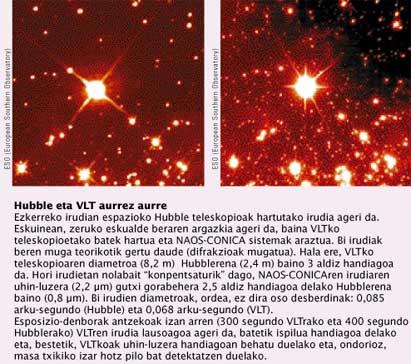VLT telescope, Hubble competitor on Earth
Elhuyar Fundazioa

It has no memorable name: VLT (Very Large Telescope). However, it is the largest group of optical telescopes in the world. It is located in the north of Chile, in the Atacama Desert, where the sky is clear 350 days a year, at the summit of Cerro Paranal, at a height of 2,635 meters. And, surprisingly, as the world's largest astronomical observatory and being in America, it is not in the hands of the United States. It is totally European, its owner is the organization ESO (European Southern Observatory).
Ten years ago the VLT project began. This gigantic project of the scientific community and the European industry has been becoming step by step in reality. The subsystems and tooling of VLT are not yet fully finished, and it will still take about two years to put the whole set working. However, since the first telescope saw the first light on 25 May 1998, the expected steps are being taken and the first results have already arrived at the hands of astronomers. Although it has not yet shown all its possibilities, what it has already shown is sufficient to affirm that it is the most powerful optical telescope of all time.
Sky oriented telescope battery
VLT is not a single telescope, but a set of telescopes that can work individually or jointly. The set consists of 4 telescopes measuring 8.2 metres in diameter (individual telescopes) and three auxiliary telescopes measuring less than 1.8 metres in diameter. The auxiliary telescopes are placed on rails and are mobile. Wavelengths between 0.3 µm and 25 µm are ‘visible’ and the system can operate in various ways:
- Standalone mode. Free use of each of the individual telescopes.
- Coherent Combined Mode. In this way, two or more individual telescopes, two or more auxiliary telescopes, or individual telescopes and accessories, are combined interferometrically to obtain the equivalent angular resolution of a giant 200 meter diameter telescope. This observation mode is known as interferometric VLT, which will give some agile images that have never been achieved so far. They say that if an astronaut circulated through the surface of the Moon, VLT would see it!
- Incoherent Combined Mode. The light of the telescopes of four individuals is combined into a single telescope to work as a 16-metre diameter telescope.
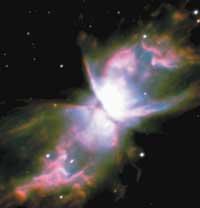
The four main mirrors of the VLT are monolithic, that is, they are made of one piece. Before the VLT no such large mirror was built: They have used 45 tons of glass in each mirror. The mirror, although it has a diameter of 8.2 meters, has only 18 centimeters thick.
Manufactured in Germany and polished and finished in France. The manufacture, polishing and quality control of a mirror require almost four years. The error of the optical surface is 0.00005 millimeters. In other words, this means that on an area of 164 kilometers in diameter (from Tudela to Baiona) the error would be one millimeter.
Since the first giant mirror arrived in Atacama in December 1997, little by little the rest of mirrors and equipment have arrived. Align the optical system, install laboratories, assemble, calibrate and adjust all accessories. VLT has begun to work, but it has not yet finished. Scientists estimate that the VLT will have a life of more than 25 years, a period in which their tools and information systems will be constantly improving.
In October 2001 the interferometric VLT saw light for the first time: the lights of two individual telescopes were consistently combined, and they were able to show that the system works as planned. But the last milestone of the VLT was November 25, 2001, when one of the VLT’s ‘stars’ was used for the first time: versatile optics.
As fast as in space
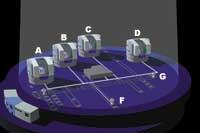
All the telescopes on Earth, however powerful they may be, have a problem: the atmosphere. In fact, the purity of the terrestrial telescopes is limited by the effect of atmospheric turbulence. When the light of a star or an astro crosses the earth's atmosphere, it moves by atmospheric turbulence. That is why the stars ñir-ñir. If there were no atmosphere, there would be no ñir-ñir-ñirris and we would see the light of the stars as a fixed light point. The telescope also sees what we see with our eyes and the turbulence degrades the purity of the image that the telescope takes. The problem is more serious, the longer the exposure time.
The most ‘simple’ way to avoid the problem of turbulence is to remove the atmosphere, that is, to place the telescope where there is no atmosphere. An example of this is Hubble, a telescope that revolves around the Earth. But, of course, it is impossible to take to space the giant of Cerro Paranal, at least today. Thus, scientists have invented a new way to avoid the effect of atmospheric turbulence: versatile optics, a system that adjusts the distortion of light in real time.
The area of adaptive optics is a flexible computer-controlled mirror. The mirror is placed in the passage of light and, changing of form, returns continuously the light. This allows for more agile images. Now, as if the telescope were in space, it can work without light distortions caused by the atmosphere.

The system installed in VLT is called NAOS-CONICA. On October 24, 2001, the pieces of the utility arrived at Cerro Paranal. Immediately astronomers and engineers began to assemble this complex tool in the fourth telescope. After the tests and adjustments made in the coming days, on November 25, it was reported that the tool was ready to see the ‘first light’.
In the evening, the telescope operator struck a button and the giant telescope began to move slowly in search of its first goal: a star of our Milky Way, a distant star that can only be seen with a telescope. The CONICA camera detected its infrared light and quickly appeared on the computer screen. The image was already very good for astronomical standards, as it only had a diameter of 0.50 seconds of arc (see image left in the table on the previous page).
Subsequently, the operator launched the versatile optics system NAOS, which used the image of the star as a source of reference light to measure atmospheric turbulence, and which began to modify its shape according to the orders that the control computer sent it 500 times per second. Consequently, he began to fit the image that was on the computer screen. A few seconds earlier it was a set of diffuse and vibrant lights that suddenly became a rigorous, slow and bright spot of light. The operator then measured the diameter of the image: 0,068 only arc seconds! (see right image in the image on the previous page).
The new generation of adaptive optics has been a great way for astronomical observations.

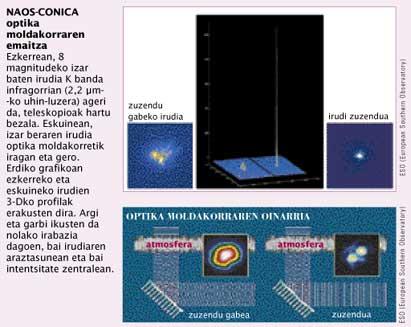
What is THAT?
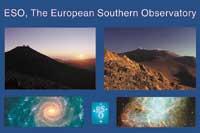
The European Southern Observatory, ESO (European Southern Observatory), was created in 1962 for the implementation and use of an astronomical observatory in the southern hemisphere, in order to promote and organize astronomical cooperation. It is the main astronomical organization in Europe. Currently there are 9 states that make up ESO: Belgium, Denmark, France, Germany, Italy, Holland, Portugal, Sweden and Switzerland. And in July of this year the United Kingdom will also become ESO.
The ESO has two observatories: one is La Silla, 600 km north of Santiago de Chile, composed of 14 optical telescopes and a radio telescope. The other is that of Cerro Paranal, called VLT.
The headquarters of ESO is in Garching, next to Munich, Germany.
Basic objectives of the VLTAstronomy, as a science, is advancing a lot in recent years. Therefore, it is not easy to know what you will need within 10 years. However, the set of VLT telescopes is a relatively flexible system and adaptable to new needs. The following basic scientific objectives identified by astronomers were taken into account when designing the VLT and deciding their tools and ways of working:
|
